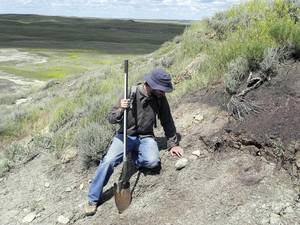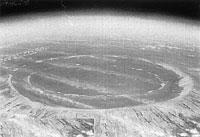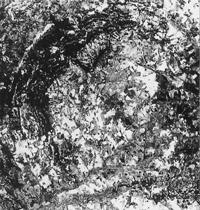Memories of space
2009/01/01 Lakar Iraizoz, Oihane - Elhuyar Zientzia Iturria: Elhuyar aldizkaria
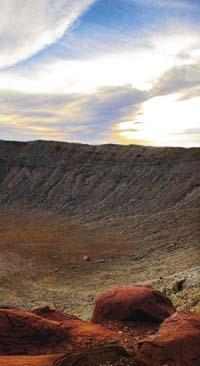
Impact craters occur when a relatively large meteorite hits a body with a solid surface, i.e. a dwarf planet, a satellite or of any kind. These collisions are due to the gravity of the bodies. The gravity zones of the aforementioned bodies attract and target meteoroids that move in space at high speed.
Of course, the larger a body, the more meteoroids it will attract. However, its larger size allows a planet to develop a "counterweight" hidden from meteoroids: the atmosphere. Its greater gravity facilitates the retention of the gases surrounding it. Mars, for example, has about half the diameter of the Earth. Thus, its mass is much smaller and therefore its atmosphere is much finer than the Earth.
When the meteorites go to Earth they must pass through their atmosphere. Atmospheric gases slow down meteoroids by rubbing them against gases. This friction also causes the warming of meteoroids, which often become inflamed. This causes it to decompose in the descent, and most of them disintegrate as we move into the atmosphere. Only meteoroids from a certain measure become meteorites, that is, to touch the earth's surface. We see those who disintegrate as the rays of light that pass through the sky and have called them fleeting stars.
Meteoroids are heated by atmospheric gas to the point of inflating due to their entry at high speed. In fact, meteoroids passing by the Earth must have a minimum speed of 11.2 km/s to head towards the Earth's surface. This speed is known in another context as escape speed. It is said that an object needs that minimum speed to get out of the Earth's influence, to overcome the pull of gravity.
The case of meteoroids would be the opposite: if they had a lower speed, when they reached the side of the Earth they would enter their gravity zone and begin to rotate around the Earth. Therefore, a body needs the same minimum speed to get out of Earth and reach Earth.

However, meteoroids also have a maximum speed limit to influence Earth's gravity. This limit has been set at 72 kilometers per second. If the objects that circulate through space pass faster than this next to the Earth, the gravity of the Earth will not have enough strength to attract them and will go ahead.
Impact on speed
Meteoroids that have not completely disintegrated into the atmosphere hit the earth's surface and can be of various sizes at the time of the collision: small pebbles, enough to drill a car, as large as to make a hole of a few meters and, very occasionally, capable of provoking a great slaughter.
Logically, the size of the meteorite has a lot to do with the impact of this shock. The energy released by hitting the ground depends on the mass of the object and its speed at that time, the square of speed. Given that they penetrate at high speed into the Earth's atmosphere, large meteorites can cause a tremendous slaughter.

And at some point they have occurred. For example, today most experts recognize that the impact of a meteorite destroyed dinosaurs about 65 million years ago. It seems that a ten kilometer diameter meteorite hit the Earth on the Mexican peninsula of Yucatan, forming a crater of almost two hundred kilometers in diameter, the Chicxulub crater. The remains of this meteorite, a layer rich in iridium, are scattered around the world in the sediments of the time. This phenomenon caused the passage from one geological epoch to another, due to the disappearance of half of the species that accompanied the dinosaurs on Earth. This layer is known as the K-T limit, as it was then that the Cretaceous ended and the Tertiary began.
The explosion caused by the collision of that meteorite caused, apparently, a terrible fire that caused the release into the atmosphere of grains of mud and sand that covered the whole world. Studies in this regard indicate that this layer of particles may have remained in the atmosphere for several years, making it difficult to pass sunlight. This would have collapsed the existing trophic chain.
Other changes caused by large meteorites in areas where there have been less catastrophic collisions. For example, in Siberia, the shock crater, now called Popigai, diamonds were formed when a meteorite hit the Earth. This area was very rich in graffiti and the graphite located in a radius of 13.6 kilometers from the place of impact suddenly became diamond, being so great the pressure exerted by the shock.
Difficult to detect
Due to the great changes, terrestrial craters are not visible. For example, compared to the Moon or Mars, the Earth is larger, so since its birth it has attracted much more meteorites. However, in the pictures of the surface of the Moon or Mars, they appear covered with craters that seem to have more craters than the Earth. How is it possible?
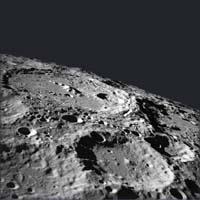
As already mentioned, the atmosphere is a shield against meteorites, but other factors make the craters on Earth invisible. On the one hand, two-thirds of the Earth are flooded and it is very difficult to detect the remains of meteorites fallen in the water. On the other hand, our planet is geologically active; the surface is constantly changing due to plate tectonics, and the physical-chemical changes that occur in the environment (produced by meteorological, biological, etc.). cause erosion of rocks. As a result of these processes, debris of meteorological impacts have been eliminated on Earth.
Not only that, but the vegetation we have not found on the planets and satellites we know covers many craters that have not yet been eroded and could be visible. They have remained under forests and other plants, of which it is difficult to detect.
However, this last 'problem' has been recently solved. In the December issue of Geology magazine he realized that scientists from Alberta University found a crater covered by a forest. For this purpose, a technology widely used to make topographic maps was used: Technology called LIDAR.
This technology emits laser pulses, the laser bounces off the ground and accurately signals the distance from which it hit the ground. The vegetation does not interfere with the laser path, so it has been very useful for the scientists mentioned to show what is under the vegetation. The laser pulses were emitted from an airplane and found the footprint of a fallen meteorite about 1,100 years ago. It seems, therefore, that the LIDAR technique will help scientists pursuing craters. They think there are hundreds of craters without finding them, simply because they cannot see them.
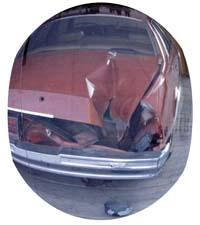
However, both by laser and at a glance, it is not easy to detect large craters caused by large meteorites if we do not move away from the place where the crater is located, that is, if we do not look at the surface from a great distance. The edges of large craters may appear to be alterations common to orography. Since they began working with satellites, many of the craters that had hitherto been unnoticed began to identify.
Currently, some 175 impact craters have been identified. Surely there will be more. To identify those who are not covered in forests and those who are not very large and remarkable, only patience and satellite images are needed. For example, the Google Earth software has become a very useful tool available to anyone. More than one fan has already found an unidentified crater. Do you want to be next? Look attentively and luck!
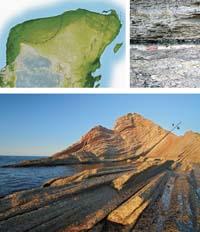

Gai honi buruzko eduki gehiago
Elhuyarrek garatutako teknologia



